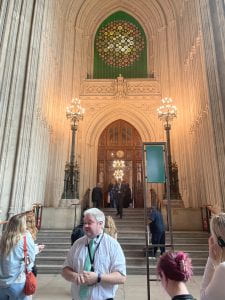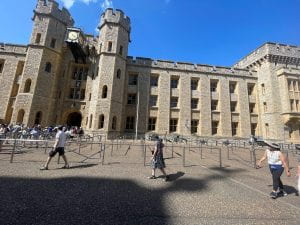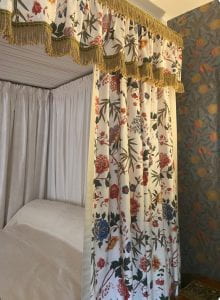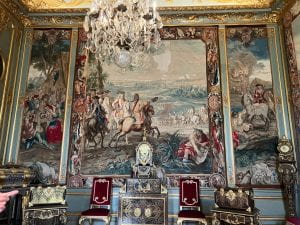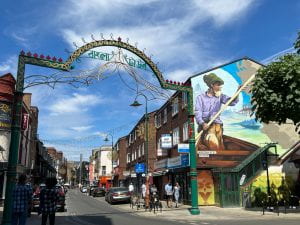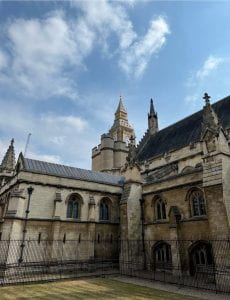The Parliament of England holds both the House of Commons and the House of Lords, fueling plenty of lawmaking within its walls. It was amazing to see the history behind the architecture and artwork in Parliament. The UK electing its first Prime Minister of Indian descent brings up the conversation of the participation of the English government in Indian colonization and Indian participation in the English government.
Britain controlled India through the East India Tea Company starting in 1757, and directly ruled India starting in 1858. The start of direct rule brought about the term ‘British Raj.’ As we walked through the hallway, there were paintings depicting the British Empire throughout history. There was a painting depicting the start of the East India Tea Company and associated agreements. I thought it was interesting to include this piece of art as the East India Tea Company did lead to the colonization of India.
Dadabhai Naoroji was an incredibly important figure in many ways; he was an advocate for progressive causes in India and the first Asian MP (Member of Parliament) in the UK. In India, Naoroji worked to provide schooling and education for Indian girls and was an early advocate for gender equality. After his first visit to Britain, Naoroji spoke out about imperialism and how it was draining the wealth from India. His movement picked up momentum and he was elected to Parliament in 1892. As an MP, he worked on legislation to return the bureaucracy to India. However, MPs did not take him up on this legislation and Naoroji lost his election in 1895. He later demanded self-rule or swaraj for India and stated that it would serve as reparation. Seeing the painting of India alongside the grandiose art and decor set a certain tone to how Britain views India and the power that they feel they still have over India.
The UK recently appointed Rishi Sunak to the position of Prime Minister and his background and upbringing have posed questions surrounding Indian immigration to the UK and the US. Sunak credited his success to his family’s hard work and sacrifice as opposed to institutional forces in both India and the UK. Immigration from India depends on various policies and factors like class, income, and education. Even though India has one of the largest migrant export rates, they continue to restrict lower-class Indians from leaving. At the same time, they provide those of higher class and more education with resources and advantages. Sunak’s grandfather, Ramdas Sunak, left India to go to Nairobi to work as a clerk. He helped to manage overseas laborers and exports. Unlike those of lower classes, educated immigrants like Ramdas Sunak were free to move and were not held to a contract. This meant that they could move to the US or the UK. Despite this advantage, every immigrant faced rampant racism.
Those of lower classes continue to have a harder time finding opportunities and resources to immigrate. The 1983 Immigration Act in India is a contributor to this, adding paperwork and fines to the approval process, while educated immigrants can leave when they please. Despite their advantages, many Indian immigrants continue to credit their success to their hard work. While hard work is one aspect of it, the benefits and resources given to higher class and more educated Indians must be acknowledged. Rishi Sunak is the first Indian Prime Minister, but we need to think about his journey to Parliament too.
Sources:
https://www.bbc.co.uk/news/world-asia-india-52829458
https://www.washingtonpost.com/politics/2022/12/09/rishi-sunak-uk-immigrant-family/


